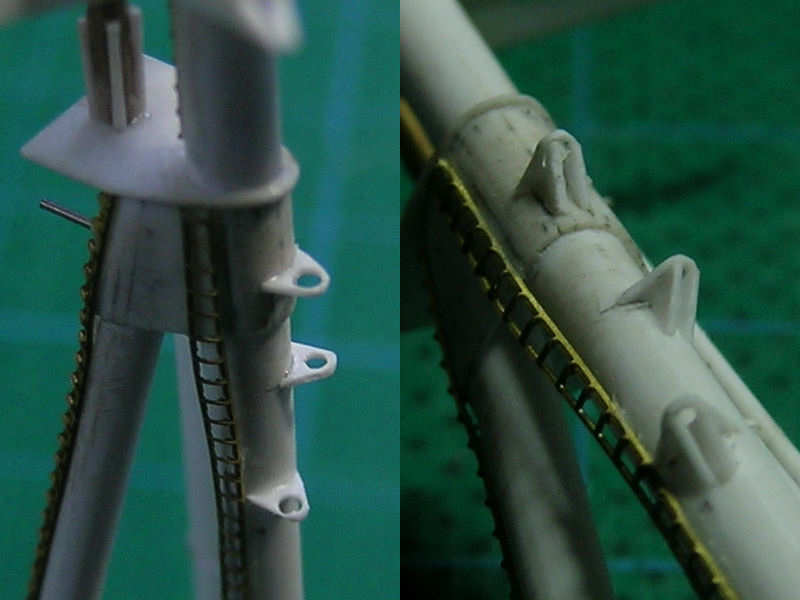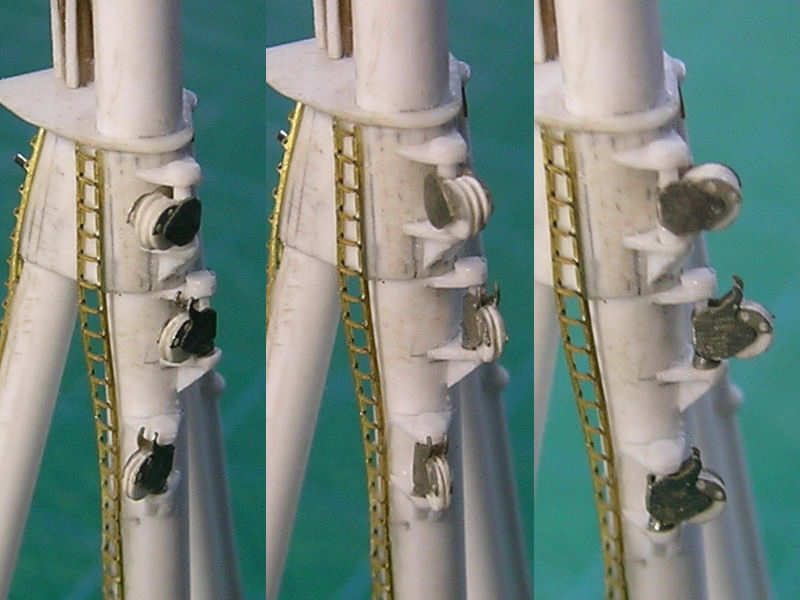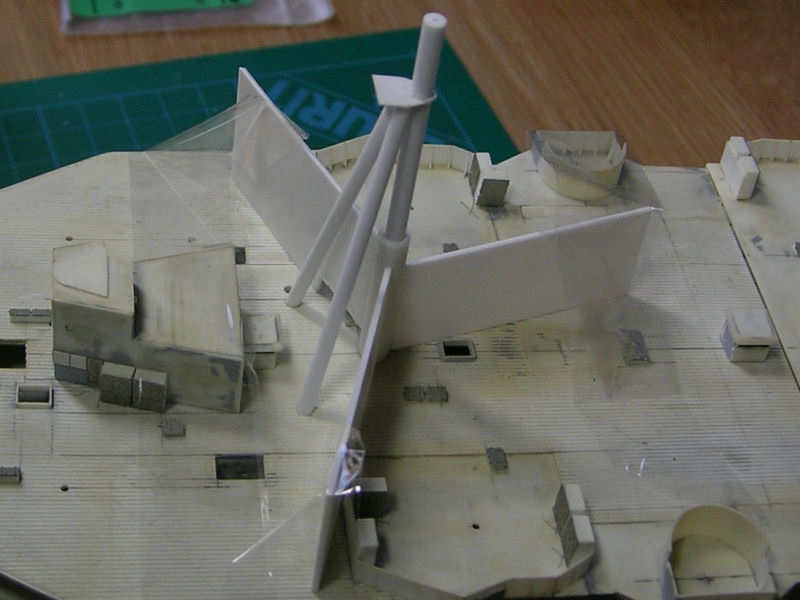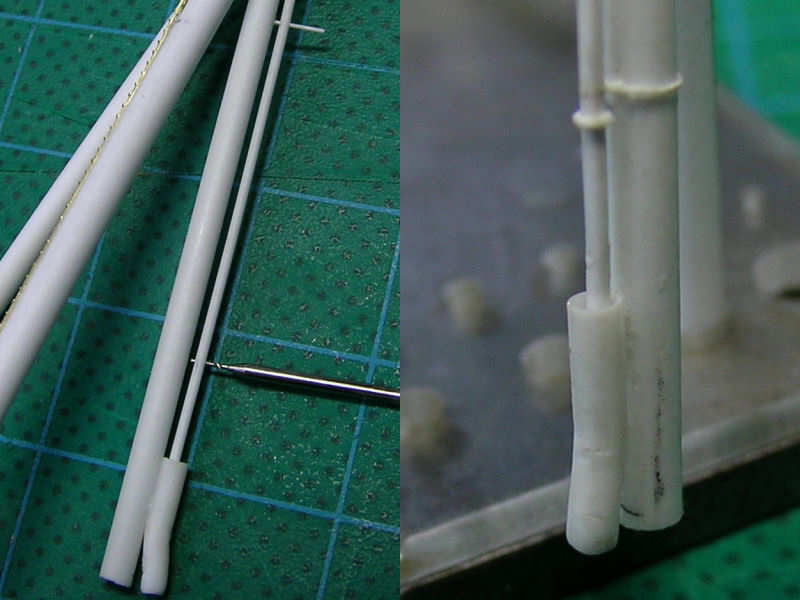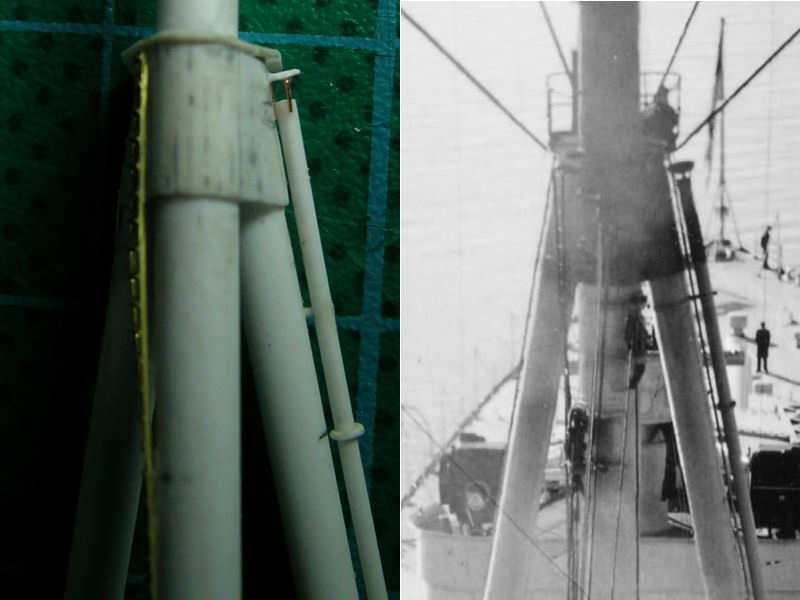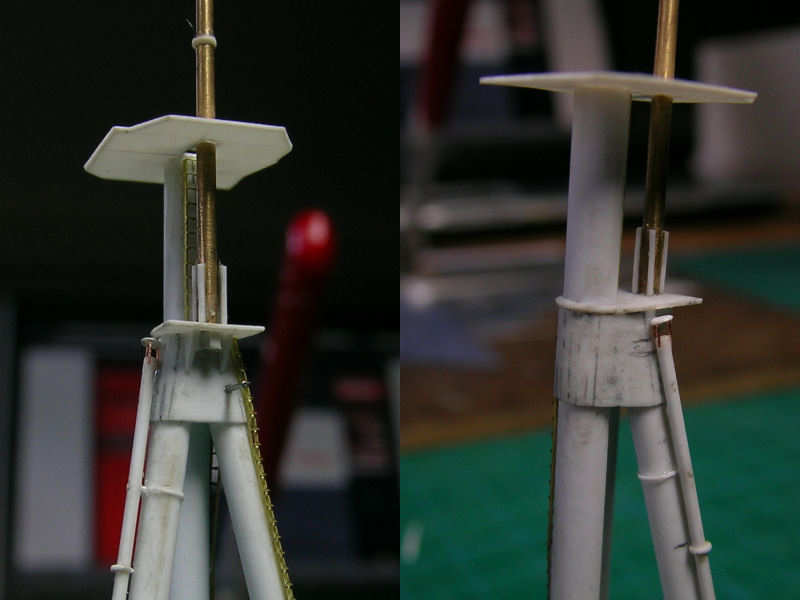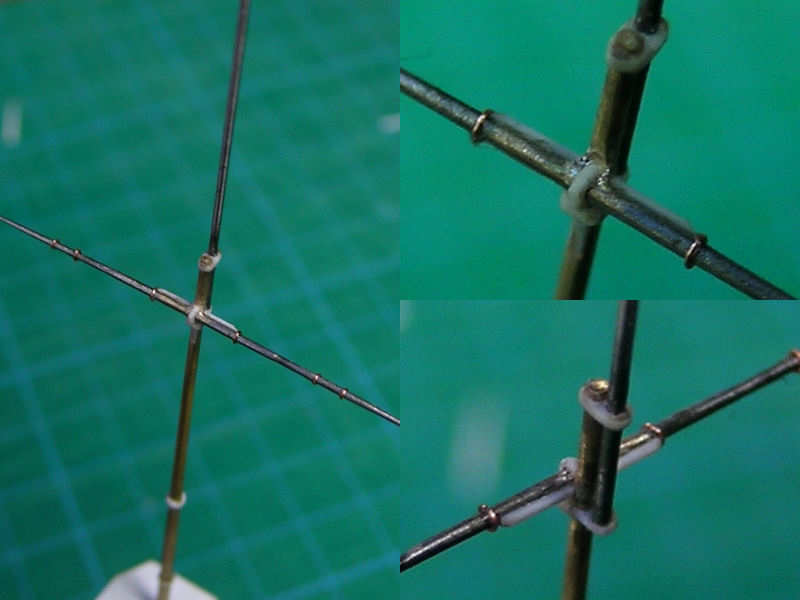As I explaining in my previous post of the main mast, the main topmast was removed from the main mast and replaced by the aerial for the Type 279M air warning radar. An aerial is an antenna in military terms. This system normally operated with a transmitter and a receiver array for the Type 279 radar (and later the Type 281). HMS Hood was the first ship fitted with the experimental Type 279M aerial, whereby the aerial was a transceiver array capable of both transmitting and receiving requiring only a single aerial. This is clearly sited on the radar page and this transcript on the official Hood site. If you want to know more, or even everything, about the Type 279 radar aerial, please go to the Royal Navy’s museum of radar and communications website, a source of information the likes of which I not seen before. I cannot find any more information of the Type 279M in particular, nor is it mentioned in the article “The development of Radar in the Royal Navy (1935-45)” by Alastair Mitchel in Warship, vol IV, pp 2-14, pp 117-134. The M designates the first major modification although the Type 279 was in itself an update of the Type 79, and other transceiver arrays are usually marked with a B (single mast version) and no other instances of an M variant were found.
Pictures of HMS Hood taken weeks before her loss do not show the aerial clearly. But, at least there is ‘something’ visible. Unfortunately, the Type 279M radar is usual a ‘something’ on a picture, showing itself barely visible high up in the masts of battleships and cruisers. One must also be careful, as the radar aerial Type 281 (fitted with a Type 240 IFF antenna) looks a lot like the Type 279 (fitted with a Type 243 IFF antenna).
All these antenna do show to have a small service platform that seems to be standard on all vessels and Raven & Roberts “Battleships of WWII” & “Cruisers of WWII” show the same platform drawn on the masts. I assume that platform is of the same dimensions for both the Type 279 and the Type 281. The measurements of the aerial themselves are known, as the span of the dipole array is half the wave length of the system, and dipoles are a quarter wave length apart. The wave length was 7.5 m for the Type 279 radar
The left image is a drawing from Roger Hayward’s “Cruisers in camera” of the Type 279. At right, a picture is shown from Ross Watton’s “Anatomy of the ship: the cruiser HMS Belfast”, showing the Type 281. This was my best starting point for the Type 279M dimensions.
The best picture is from Roberts & Raven “BB’s of WWII”, page 387, showing the topmast of HMS Queen Elizabeth in 1941 and is the only good (if not excellent) photograph of the aerial. It also shows the gaff from the aft of the service platform that was present on HMS Hood as well. In order to access the platform, the ladder had to be on the front of the mast and this is visible on some pictures. The right half of the pictures shows the Type 279 (top row) and Type 281 (bottom row). Except for the differences in the aerials themselves, it appears that the Type 279 has one less masthead insulator and the platform support bracket near the mast is angled for the Type 279 and straight for the Type 281.
The mast of HMS Hood is seen “clearly” at left . Some cabinet is still present on the aft star fish. The right picture is reproduced from the Canadian Forces Base Esquimalt Naval & Military Museum with permission, showing HMS Hood in May or April 1941. The gaff is a clear indicator the radar platform was fitted and the platform and radar mast are visible, although just barely.
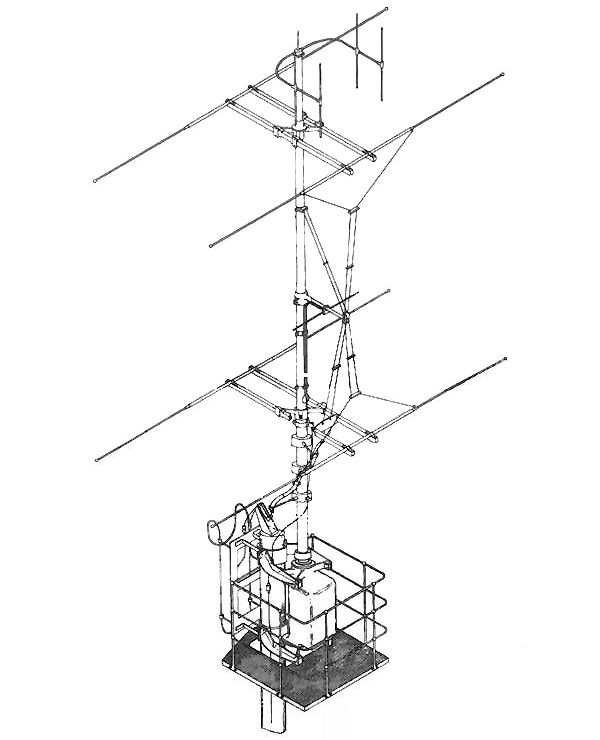
This image I found at the Royal Navy’s Museum of Radar and Communication. This picture (reproduced with permission) is absolutely fabulous, showing the Type 279 radar with the 243 IFF antenna in great detail, found here on the site of the museum (page 81/82).
Having now spent a few days flipping through my books and seriously searching the net, I think I can now make a cute mini 279 aerial.




